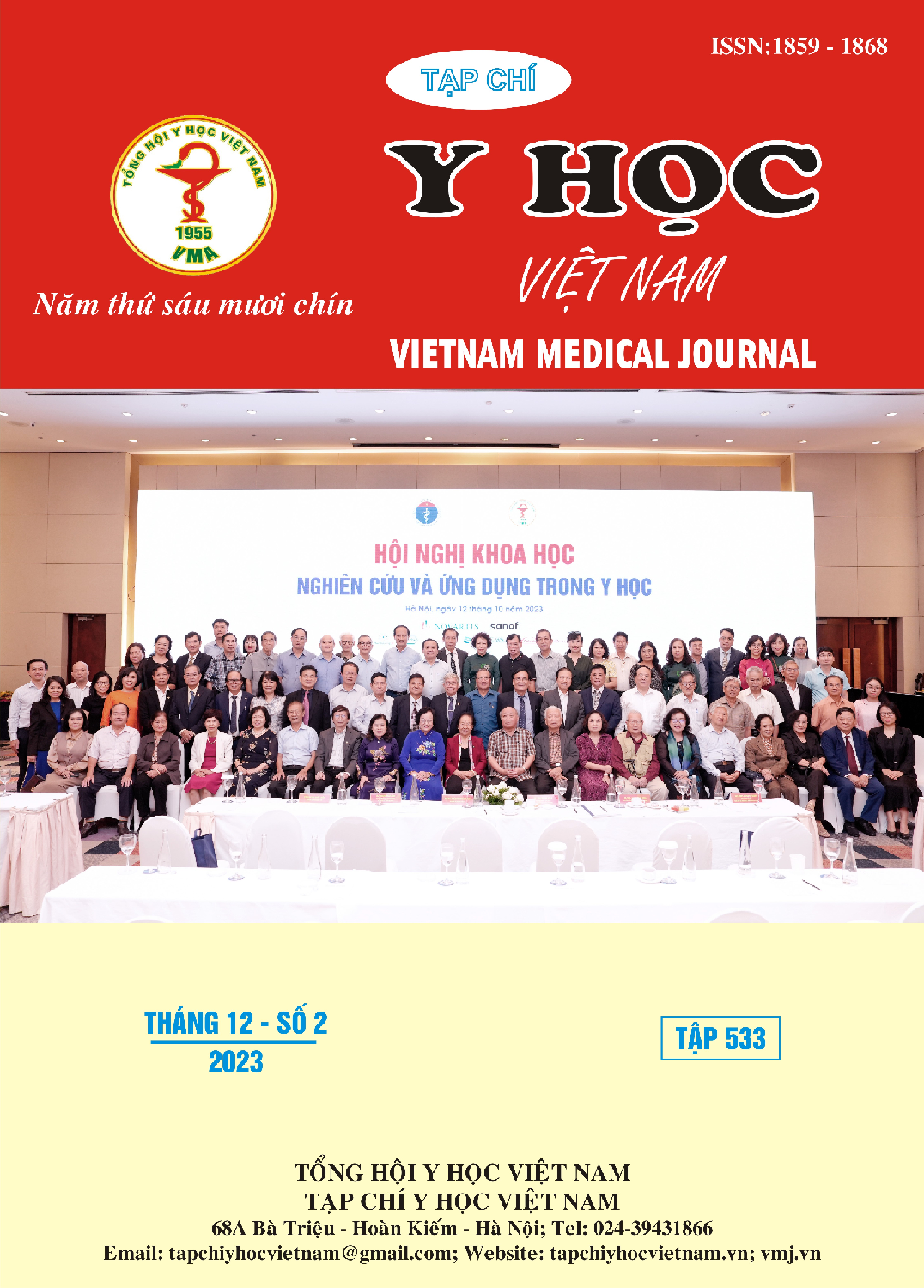FORESKIN PEDICLE FLAP IN TREATMENT PROXIMAL HYPOSPADIAS BY TWO-STAGE: FIRST FORTY PATIENTS AND RESULTS
Main Article Content
Abstract
Objective: describe the technique of the two-stage procedure with a foreskin pedicle flap for proximal hypospadias repair, and surgical outcomes. Patients and methods: retrospectively reviewed the first forty consecutive patients who underwent two-stage repair with a foreskin pedicle flap from 08.2017- 12.2022, at the urological department, Vietnam National Children’s Hospital. Results: forty patients with proximal hypospadias underwent two-stage repair with a foreskin pedicle flap. The median age of the first stage was 4.0 years old (3.0 – 4.5 years), the median age of the second stage was 4.5 years old (4.0 – 5.5 years) and the median time between stages for staged repair was 11 months (8 – 14 months). The median follow-up after the second stage was 38 months (36.6 – 40.2 months). The flap took well in all, none of them presented recurrent curvature penis at the follow-up. Overall, success was achieved in 77,5% of cases and the complication rate was 22,5%. Most of them occurred in a single complication; the most common complication was urethra-cutaneous fistulas 17,5%. In addition, urethra diverticulum, urethritis, and glans dehiscence were low. The outcome of the study did not get urethral stricture or meatal stenosis. It did not have any problem with the skin cover. All of the patients had normal voiding and the cosmetic appearance was excellent in follow-up. Conclusions: outcomes of the study with this technique had quite low complications and no urethral stricture or meatal stenosis occurred.
Article Details
References
2. Wang CX, Zhang WP, and Song HC (2019). Complications of proximal hypospadias repair with transverse preputial island flap urethroplasty: a 15-year experience with long-term follow-up. Asian J Androl, 21(3): 300-303.
3. Babu R and Chandrasekharam VS (2021). Meta-analysis comparing the outcomes of single-stage (foreskin pedicled tube) versus two-stage (foreskin free graft & foreskin pedicled flap) repair for proximal hypospadias in the last decade. Journal of Pediatric Urology, 17(5): 681-689.
4. McNamara ER, Schaeffer AJ, Logvinenko T et al (2015). Management of Proximal Hypospadias with 2-Stage Repair: 20-Year Experience. J Urol, 194(4): 1080-1085.
5. Long CJ, Chu DI, Tenney RW, et al (2017). Intermediate-Term Followup of Proximal Hypospadias Repair Reveals High Complication Rate. J Urol, 197(3 Pt 2): 852-858.
6. Joshi RS, Bachani MK, Uttarwar A.M et al (2015). The Bracka two-stage repair for severe proximal hypospadias: A single-center experience. J Indian Assoc Pediatr Surg, 20(2): 72-6.
7. Saltzman AF, Carrasco AJr, Colvin A, et al (2018). Patients with disorders of sex development and proximal hypospadias are at high risk for reoperation. World J Urol, 36(12): 2051-2058
8. Wani SA, Baba AA, Mufti GN et al (2020). Bracka versus Byar's two-stage repair in proximal hypospadias associated with severe chordee: a randomized comparative study. Pediatr Surg Int, 36(8): 965-970.
9. Yang T, Zou Y, Zhang L et al (2014). Byars two-stage procedure for hypospadias after urethral plate transection. J Pediatr Urol, 10(6): 1133-7.
10. Bracka A (1995). Hypospadias repair: the two-stage alternative. British Journal of Urology, 76, Suppl. 3, 31-41.


